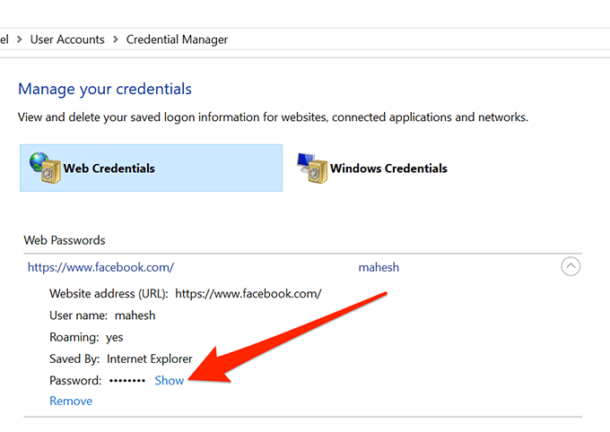
- #Windows 10 manage passwords how to
- #Windows 10 manage passwords update
- #Windows 10 manage passwords password
Below is an overview of the user process.
#Windows 10 manage passwords password
The JumpCloud Windows App is the preferred method for user password changes on Windows devices. This is a limitation of the previously mentioned Windows versions and can’t be controlled by JumpCloud. In this case, the password change operation isn’t stopped, but the user isn’t notified of success or failure. A known issue exists for Windows 8, 8.1, and Server 2012: if a user is on a slow internet connection, they can click Cancel before they see the password change confirmation screen.User accounts managed by Active Directory using AD integration won’t be able to use the Windows App to reset their password.
#Windows 10 manage passwords update
Passwords changed locally using Ctrl+Alt+Del will update the Windows Credential Manager and the Data Protection API.However, Duo is only available if it’s the only form of MFA available. They can use Push MFA though the JumpCloud Protect app, TOTP MFA through either JumpCloud Protect or another authenticator, or use Duo. If you have MFA enabled in your organization, your users will need to verify their identity using MFA before they can change their password.User accounts can’t have expired passwords.Users can’t be locked out of their JumpCloud account, see about Password Statuses.JumpCloud managed Windows users need an active internet connection to change their password.The Windows device must be running a supported version, see Windows Agent Compatibility.The device must be managed by JumpCloud through the Windows agent. See Understand the Agent.If you enable the Password expires after N days option, users receive one email a day for 7 days leading up to their password’s expiration that asks them to reset their password. Use the link inside a password expiration email.Inside the JumpCloud User Portal, go to Security Settings.Open the log in page for the JumpCloud User Portal and select Reset User Password. For more information, see Chang Your User Portal Password.Press Ctrl+Alt+Del and choose Change Password.For more information, see Users: Change Your Password in the Windows App. From the JumpCloud Windows App running in the system tray.We recommend they use the following methods in the order they’re listed:

It helps prevent someone else from seeing your credentials.Your users can change their password at any time from their device, or they can be forced to change it when their password expires.įor users on Windows devices, they can change their password in various ways. That also means closing Credential Manager after you’re done with it is critical. One important thing to remember is that once you already provide the master account password, and until the Credential Manager window is close, you won’t be asked for the master password again. Then you’ll be asked for your “master” account password. On the Password line, click the blue link “Show” to show the password. There will be all the information associated with the credential. So to unveil a password, first you have to select it in the list to expand its content. Your account password acts as a master password that can show all other saved passwords. The program requires you to enter either your currently logged in Microsoft Account password or your current local account password. In the list, you won’t be able to view the passwords. Then you need to click “Web credentials” to see your saved passwords created by Microsoft Edge. As it name speaks for itself, Credential Manager is where Windows manage all the credentials that created by Windows Store apps, Microsoft’s web browsers (IE and Edge), etc.Īs always, you can open Credential Manager by typing “Credential” into the search box on the Taskbar and run Credential Manager.

This is a component of the Control Panel that almost nobody knows about it. To view to that, you’ll need help from the Credential Manager. One thing you may notice from the list of Edge’s saved passwords is that it doesn’t allow you to see the real passwords.
#Windows 10 manage passwords how to
How to view and manage saved passwords in Credential Manager


 0 kommentar(er)
0 kommentar(er)
